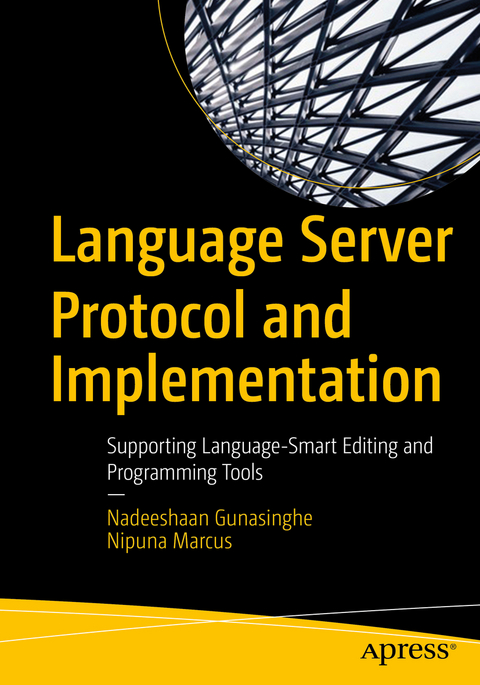
Language Server Protocol and Implementation
Apress (Verlag)
978-1-4842-7791-1 (ISBN)
This book covers the language server protocol used for communication between programming tools and your language server. The book also provides an in-depth understanding of the design, implementation, and user experience aspects which should be considered when implementing a language server. The book walks you through an example language server implementation to illustrate the basic concepts, then goes on to cover advanced aspects of language server use such as progress reporting, launchers, and extension points.
User experience is an important aspect of language server implementation and different tooling vendors strive to provide their own unique user experiences. This book explains how the protocol features can be leveraged to address the unique developer experience provided by different tooling vendors. The book also shows how to enhance the smoothness of the editing experience by orchestrating multiple features together.
What You Will Learn
Implement a language server from scratch
Understand language server protocol and its data models
Leverage the protocol while preserving the unique user experience of different editors
Extend the protocol to support more than its standard capabilities
Run a language server on top of launchers such as standard I/O and TCP socket
Seamlessly incorporate language semantics into your protocol features
Who This Book Is ForDevelopers focused on and passionate about implementing language development tools such as plug-ins and extensions for interactive development environments (IDEs) or other tools that rely upon parsing of language statements and commands, and developers who need an in-depth understanding of the language server protocol as well as how to use the language server protocol to develop extensible language services
Nadeeshaan Gunasinghe is Technical Lead at WSO2 and has more than five years of experience in enterprise integration, programming languages, and developer tooling. He leads the Ballerina Language Server team and is a key contributor to Ballerina, which is an open-source programming language and platform for the cloud, and he is an active contributor to the WSO2 Enterprise Service Bus. Nipuna Marcus is Technical Lead at WSO2 and has more than five years of experience in front end development, programming languages, and developer tooling. He was a member of the Ballerina Language Server team and a key contributor to the Ballerina programming language.
Chapter 1: Developer Tools and Language Services.- Chapter 2: Understanding the Language Server Protocol.- Chapter 3: Implementing a Language Server.- Chapter 4: General Messages.- Chapter 5: Text Synchronization.- Chapter 6: Diagnostics, Smart Editing and Documentation.- Chapter 7: Refactoring and Code Fixes .- Chapter 8: Code Navigation and Navigation Helpers .- Chapter 9: Presentation and Selection .- Chapter 10: Workspace Operations.- Chapter 11: Advanced Concepts.
| Erscheinungsdatum | 22.11.2021 |
|---|---|
| Zusatzinfo | 18 Illustrations, black and white; XXI, 239 p. 18 illus. |
| Verlagsort | Berkley |
| Sprache | englisch |
| Maße | 178 x 254 mm |
| Themenwelt | Mathematik / Informatik ► Informatik ► Programmiersprachen / -werkzeuge |
| Mathematik / Informatik ► Informatik ► Software Entwicklung | |
| Informatik ► Theorie / Studium ► Compilerbau | |
| ISBN-10 | 1-4842-7791-0 / 1484277910 |
| ISBN-13 | 978-1-4842-7791-1 / 9781484277911 |
| Zustand | Neuware |
| Haben Sie eine Frage zum Produkt? |
aus dem Bereich


